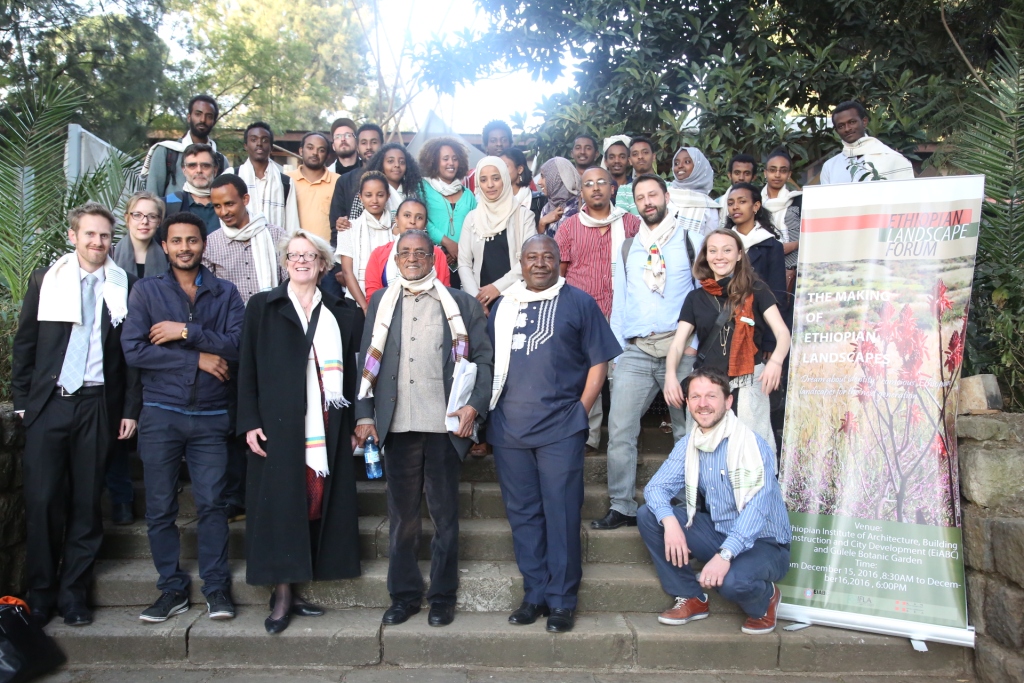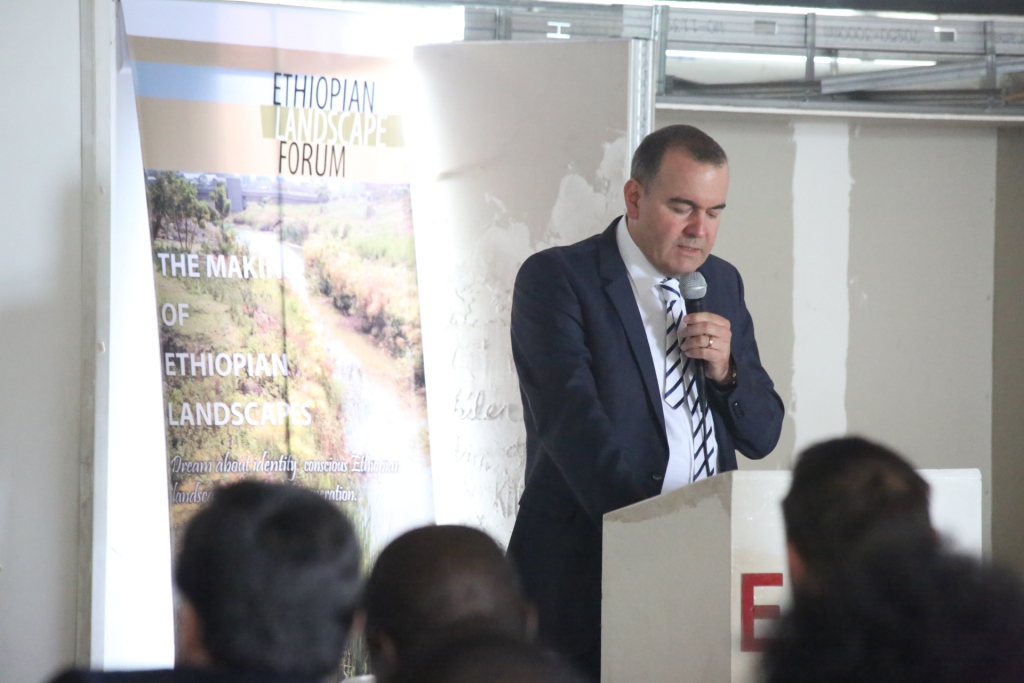1st Ethiopian Landscape Forum Addresses Need for Action

Entitled ‘The Making of Ethiopian Landscapes’ the 1st Ethiopian Landscape Forum, held from December 15th to 16th at EiABC brought together national and international experts to discuss the role that landscape architecture can play in shaping Ethiopia’s future urban, social, rural, academic, touristic, agricultural, forest, and river landscapes.
Prof. Kathryn Moore, President of the International Federation of Landscape Architects (IFLA), illustrated how landscape shapes cultural identity. ‘Landscape is the relationship between community and landscape. It’s about how people use the everyday landscape and how people experience places.’, she said. Landscape must be viewed in a holistic way. Also because the quality of landscape shapes employment, housing, health, tourism, economy and other, but often is a blind spot. In her opinion landscape should be considered as a developmental philosophy. ‘We have to think long-term and have a vision. We must ask ourselves ‘What is the cost of doing nothing?’ and change the view of governments on how to deliver infrastructure. We must give everyday landscapes a voice.’ A step towards this could be the signing of the ‘Global Landscape Convention’ that will be presented during the World Design Summit in Montreal in 2017.
‘Think global, act local’ is how Prof. Tunji Adejumo, President of the African Branch of IFLA, sees the role of landscape architecture. ‘Most of today’s problems have no boundaries. Think about the effects of climate change that lead to desertification or floods as well as other problems such as migration or political crises.’ Every country has an identity, a landscape where they work, live and play. The landscape is made up by human factors such as religion, social context, and urbanisation and the ecosystem that includes fauna and flora. ‘We as landscape architects must see the overall picture and then act locally. We are local solution providers and must design in harmony with the biosphere of the planet and the global ecosystem.’ Prof. Tunji summarized.
During the two days of the event altogether 12 presenters highlighted various aspects of landscape architecture. Amongst them distinguished speakers such as the former Environment Minister, Tewolde Berhan Gebre Egziabher, who elaborated on the results of the 2015 United Nations Climate Change Conference, COP 21, or Ato Wondwossen, Chairperson of the Association of Ethiopian Architects, AEA, who emphasised that landscape architecture is a crucial issue in Ethiopia that should receive more attention and that that could maybe be helped by establishing an institute or a professional association. Two more international speakers, Graham Young from the University of Pretoria in South Africa and Andreja Tutundzicfrom the University of Belgrade in Serbia presented examples of landscape projects and spoke about the education of landscape architects in their respective countries. Joachim Dieter, Scientific Director of EiABC, pointed out that EiABC was the only institute in the Horn of Africa region that offered a master’s degree program in landscape architecture.
In addition to the speeches and discussions, an exhibition of contemporary landscape architecture works from across the African continent was shown aiming at highlighting the potential of landscape architecture in regards to its contribution to development. Following the exhibition, the works will be collated into a book entitled ‘Crafting African Landscapes’.
